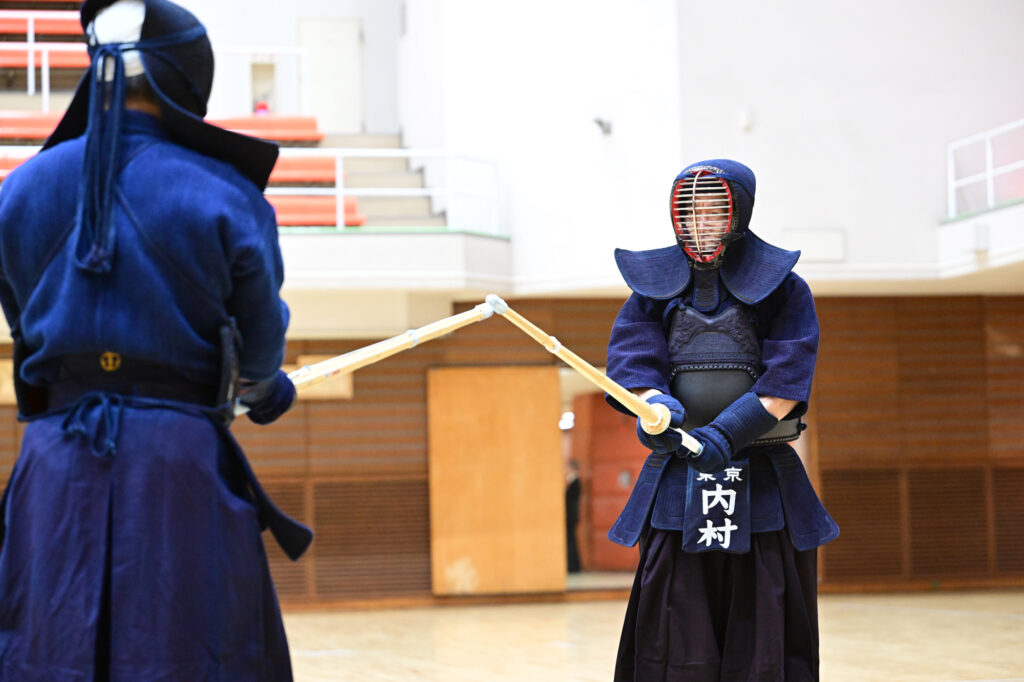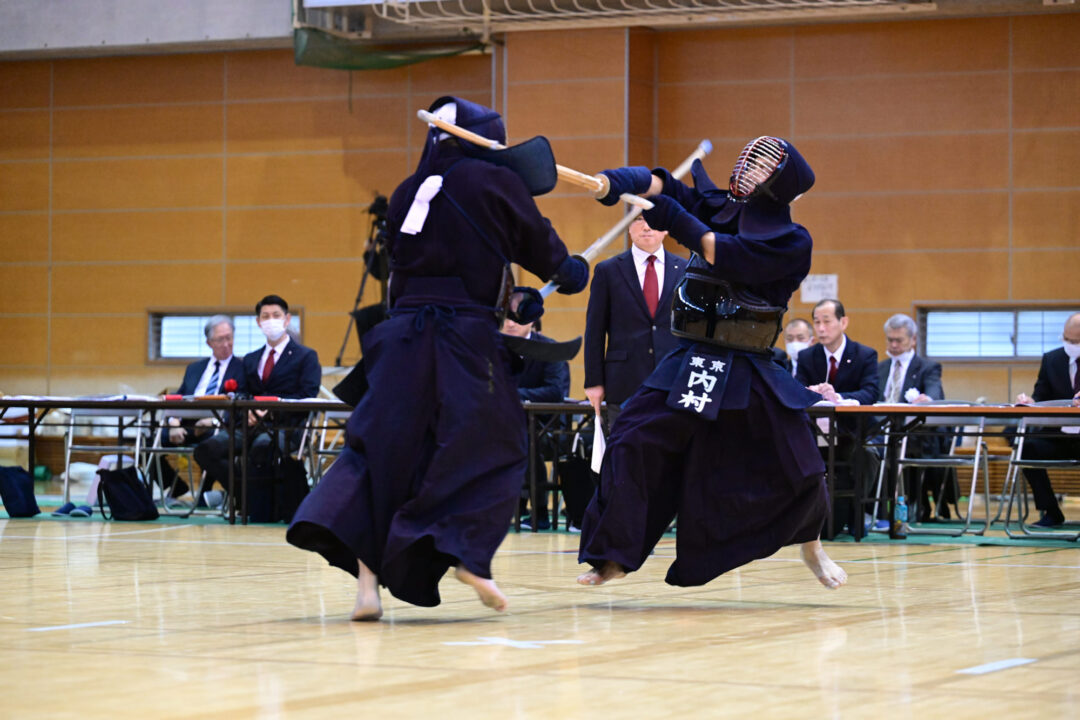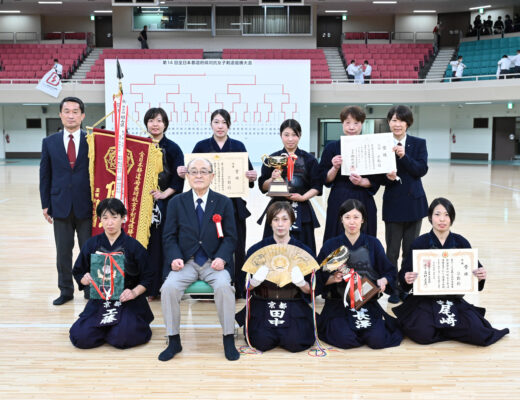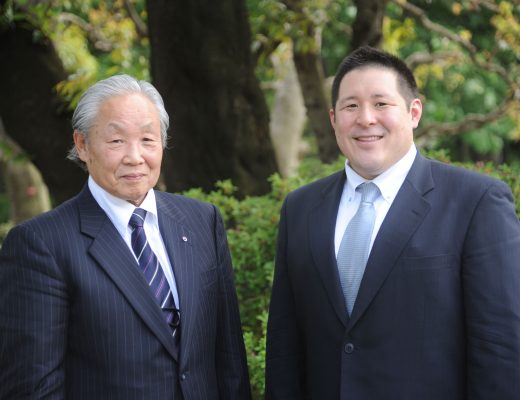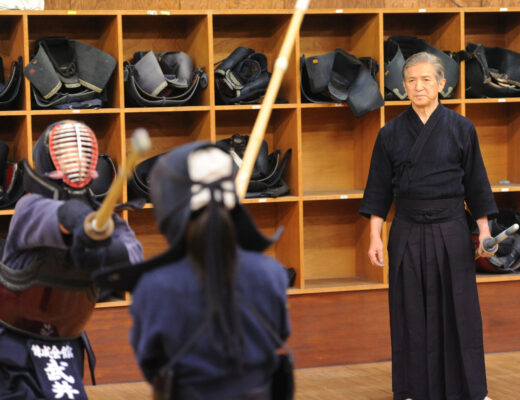2024.5 KENDOJIDAI
Photography: Nishiguchi Kunihiko
Composition: Tsuchiya Tomohiro
Translation: Pepijn Boomgaard
Uchimura Ryoichi has been runner-up in the All Japan Invitational 7th Dan Tournament three times, and this year he placed 3rd for the second time. He is also active as coach of the Metropolitan Police Department Tokuren and the Japanese national team. His achievements are legendary. We asked him about his current view of Kendo and to reflect on the recent 7th Dan Tournament.
Uchimura Ryoichi (Kyoshi 7th Dan)

Reflecting on the 7th Dan Tournament
Finding Points of Improvement
First, let’s look back at the 7th Dan Tournament held in February. Last year and the year before that, I lost in the final, so I had strong hopes of winning this year. However, I was unable to do that. This year, Takenouchi Yuya is the captain of the Metropolitan Police Department Kendo Tokuren team. I am the coach of that Tokuren team and also of the Japanese national men’s team, so I would like to thank chief instructor Hirao Yasushi and coach Harada Satoru for creating the perfect environment for me to prepare for the 7th Dan Tournament.
In the first match of the group stage, I fought Kamei, who I faced in the final two years ago. I tried to get an Ippon, but the match ended in a draw. Next, I faced Sasagawa thinking that it would be an important match and that I had to do something. I managed to score two Kote. Next, I faced Ebihara, who I know well because we went to Kendo class at the police academy together. It was just after the Covid-19 pandemic, so we were under many restrictions and could not practice as much as we’d liked. We only got to practice a little, and we weren’t allowed to use Hassei. Since we went through this difficult time together, I was happy to be able to compete with him at this tournament.
Ebihara was in good shape, and he scored Debana-men with his first strike. I was cautious of being struck there, but he still managed to hit me. It seemed like he had practiced well, as he was moving well. I felt like he was still aiming for my Men after that. He came for Men again with his second and third strike, and his timing was good. Maybe it was because my movement was too big, or because I was too eager to score, but I couldn’t get the right timing, so I decided to go for Kaeshi-do. However, Ebihara might have been wary of that, and it did not go well. That’s why I decided to switch to Men-kaeshi-men, with which I was able to score two points.
I felt like Ebihara studied my forward movement well. However, in order to change the flow of the match, it is important to trust that there is a clue somewhere and keep going. I believe this is what allowed me to land my techniques this time. On the other hand, if the match ends without me being able to find that clue, it is because my effort was lacking, which I will reflect on.
The Importance of Winning through Seme Before Closing the Distance
During the knockout stage, you don’t have the option of going for a draw. Each match is win or lose. I try to stick to an offensive style of Kendo, so I tried not to be mentally overwhelmed by my opponents. In the quarterfinals, I faced Furukawa from Osaka. I felt that he was aiming for the moment I stepped forward, and I was able to seize the opportunity to score Kote. In the semifinals I fought Hatakenaka, my junior at the Metropolitan Police Department. During the match, I was hoping to find an opportunity to strike. However, after the match went into overtime, my movement became too big and Hatakenaka was able to score Debana-men. This is something I need to reflect and improve on. Because I’m not a tall person, there are times when I need to move forward with a big motion. It is important to understand what I am going to do before stepping forward like that. If I control my opponent, I can close the distance when the opportunity arises. I feel that during this match, I was not able to win through Seme. Whether I win or lose, I will reflect on a match and analyze it to find out what went well and what went badly. I then use this to prepare for my next match.
Getting the most out of Keiko
The members of the Metropolitan Police Department Tokuren came to support me at the 7th Dan Tournament. This was very encouraging. As I am a coach now, participating in the tournament gave me a good opportunity to once again feel what it is like to be a competitor and to be more attuned to my players. On the other hand, looking back on my own training, when I train with the Tokuren members, it is exclusively as Motodachi. Naturally, I don’t have many opportunities to train with senior Sensei. However, I always keep the importance of Kakaru (fighting someone senior to yourself and the mindset that comes with it) in mind when practicing.
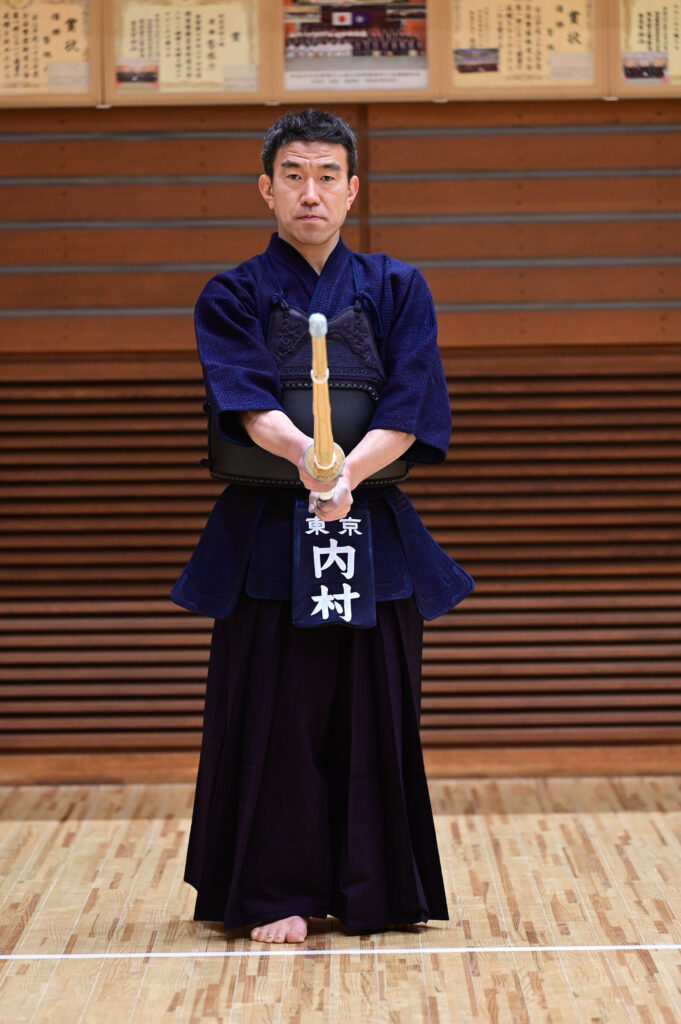
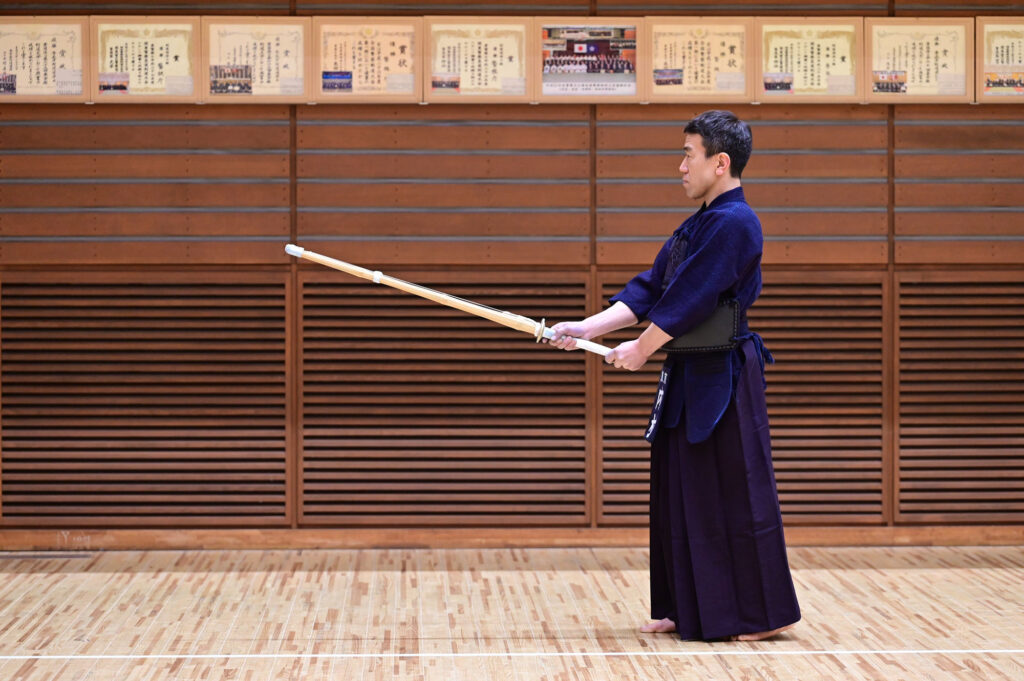
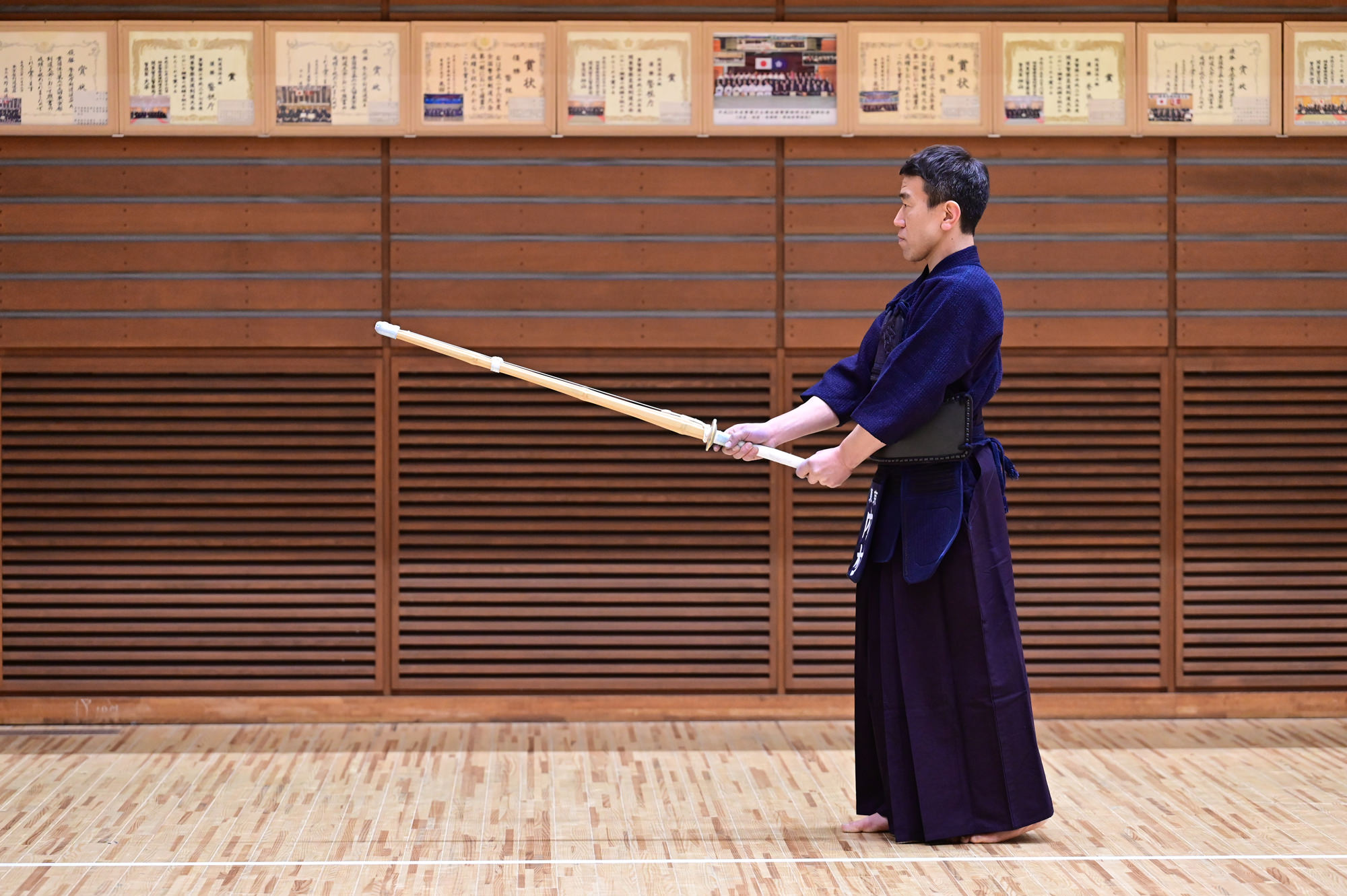

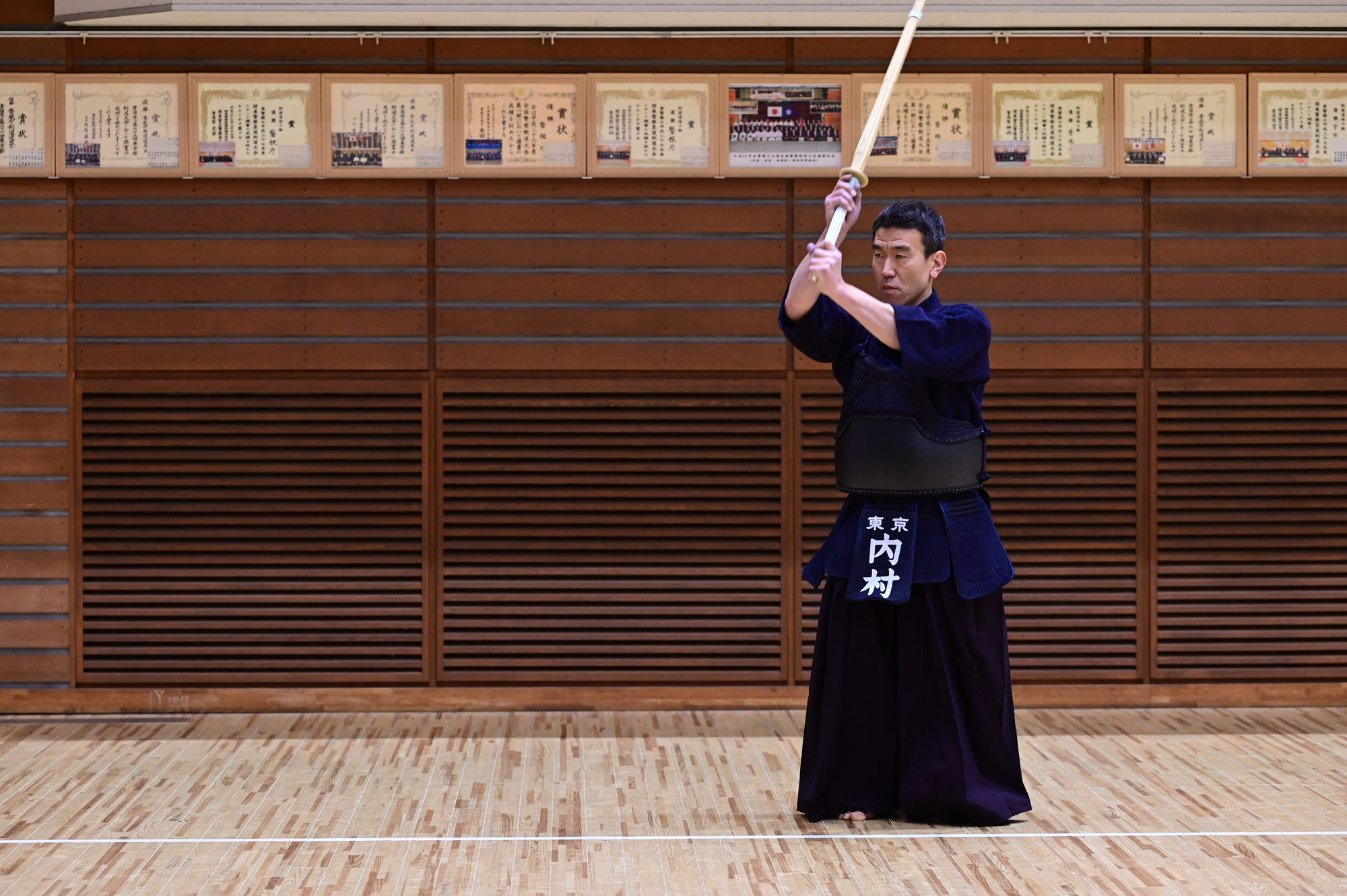

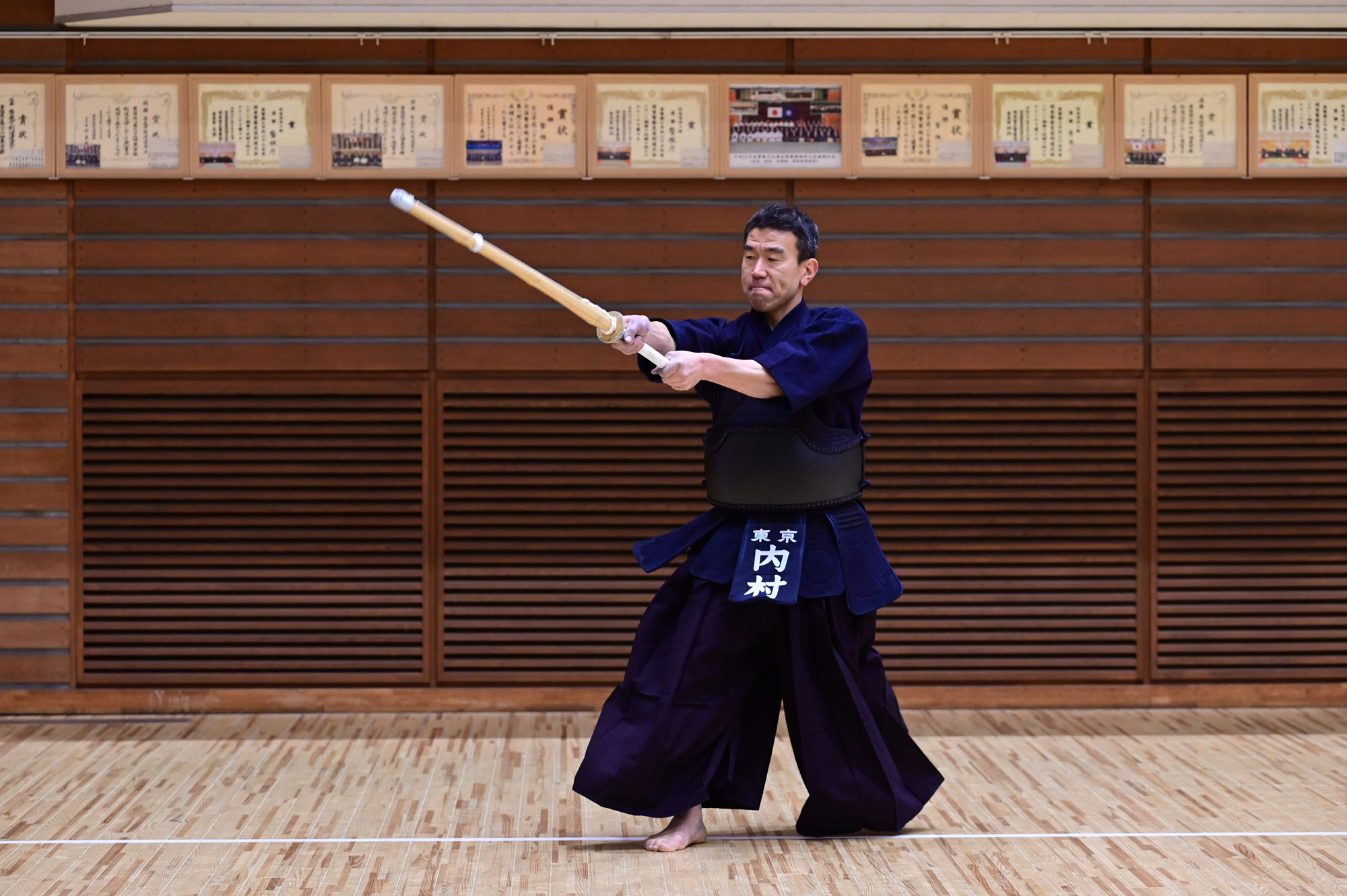
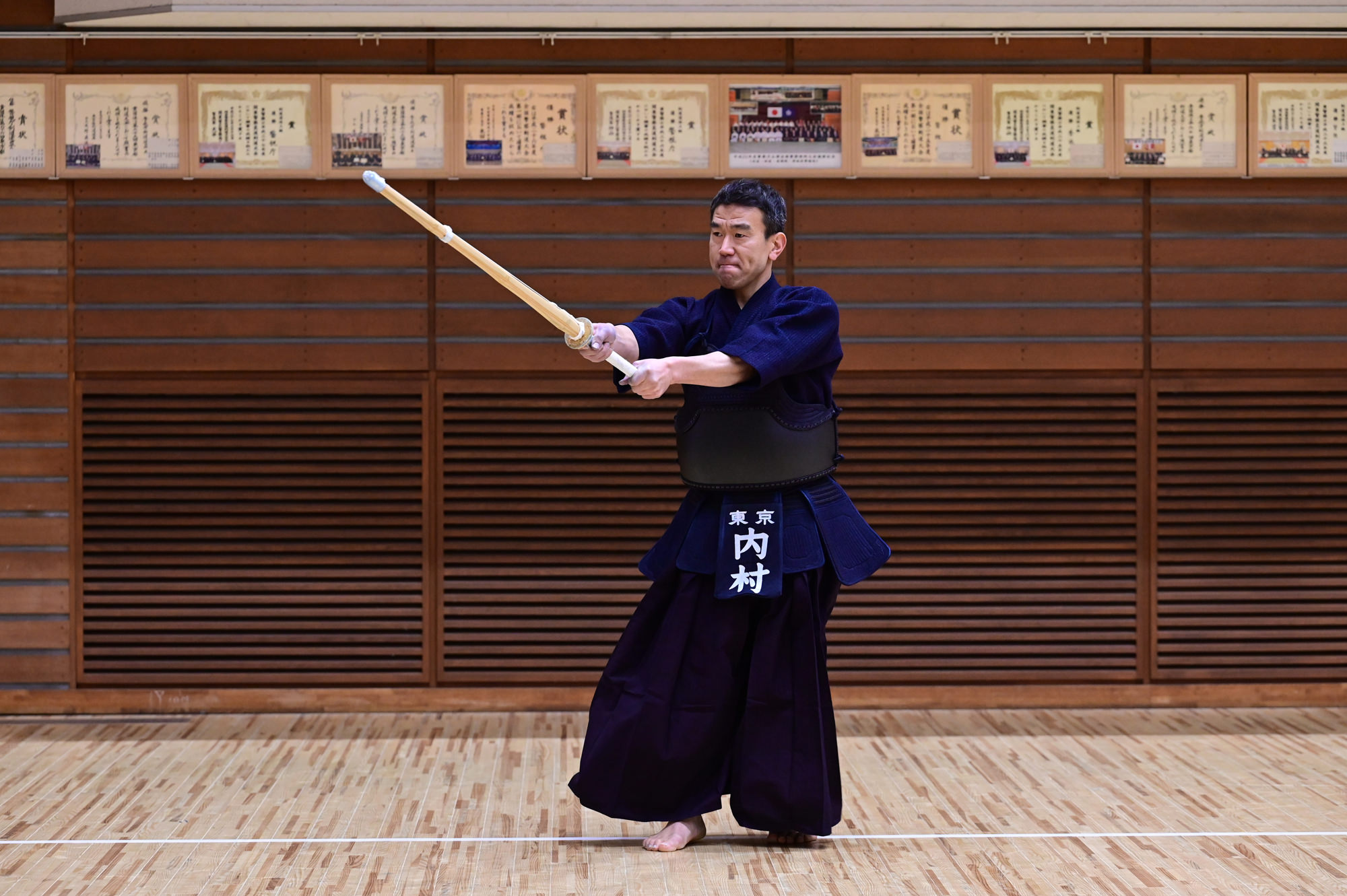
Ingenuity, Study, and Effort
At the Tokuren, training is for the players, so I never change the training to focus on myself. However, I do try to give myself something to work on during practice, including Jigeiko. I’m not blessed with a particularly good physique, nor am I naturally skilled. Therefore, I have developed my own Kendo by being more innovative than others. For example, when I’m practicing with someone who has a fast Men strike, I challenge myself to strike Men even faster. When I’m facing someone with a fast Kote, I think about how to avoid giving them a striking opportunity. I always have something I want to work on in mind.
My former teacher, Kyushu Gakuin coach Komeda Toshiro, taught me the words “ingenuity, study, and effort” when I was in junior high school. If we practice with this attitude, we will somehow get ahead of others. Current Metropolitan Police Department members Hoshiko Keita and Iwakiri Yuma also went to Kyushu Gakuin, and they are putting this teaching into practice very well. I’m amazed at how well they learn new things.
Start practice with Okuri-ashi to learn how to strike with correct posture and footwork.
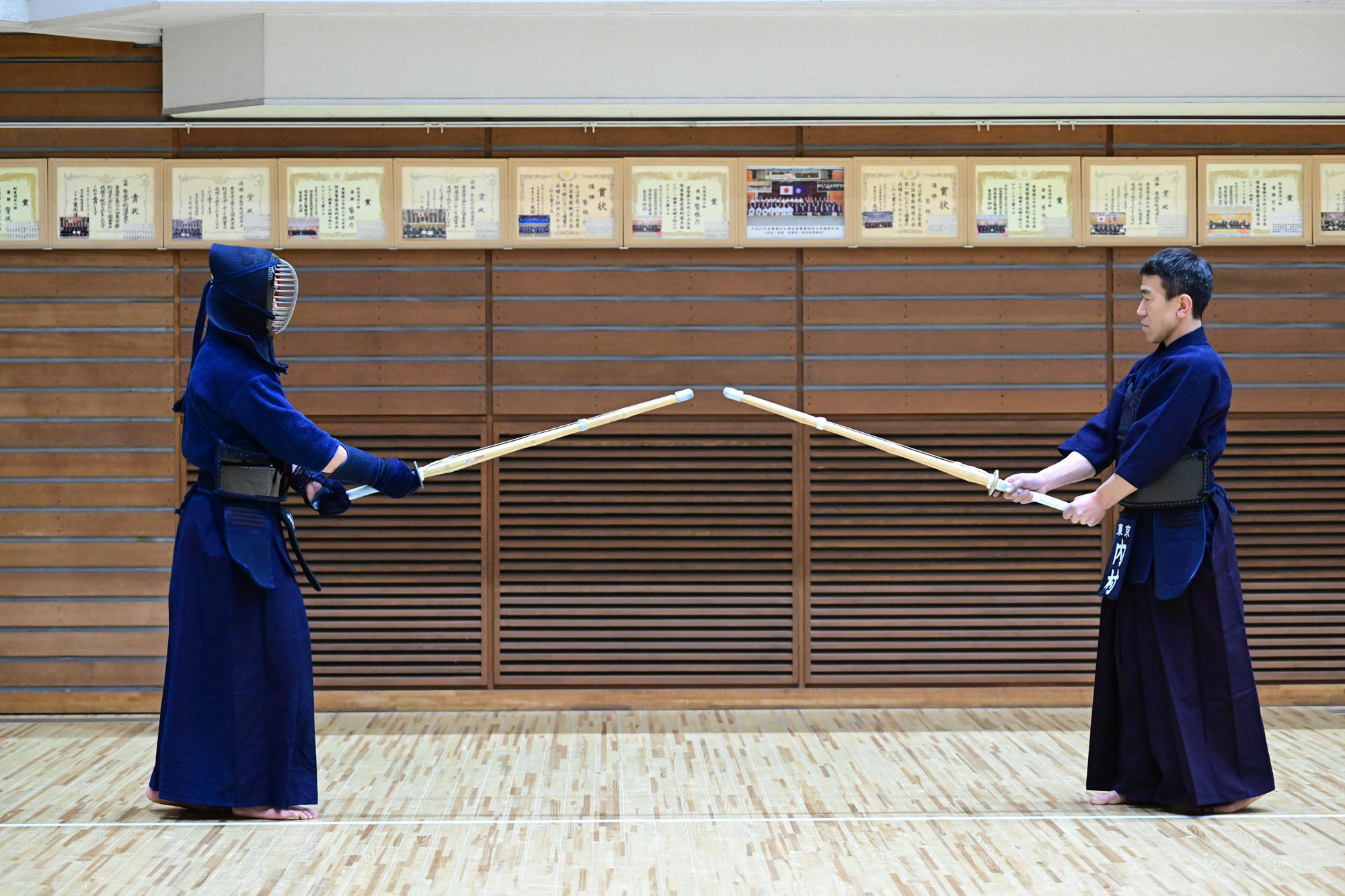


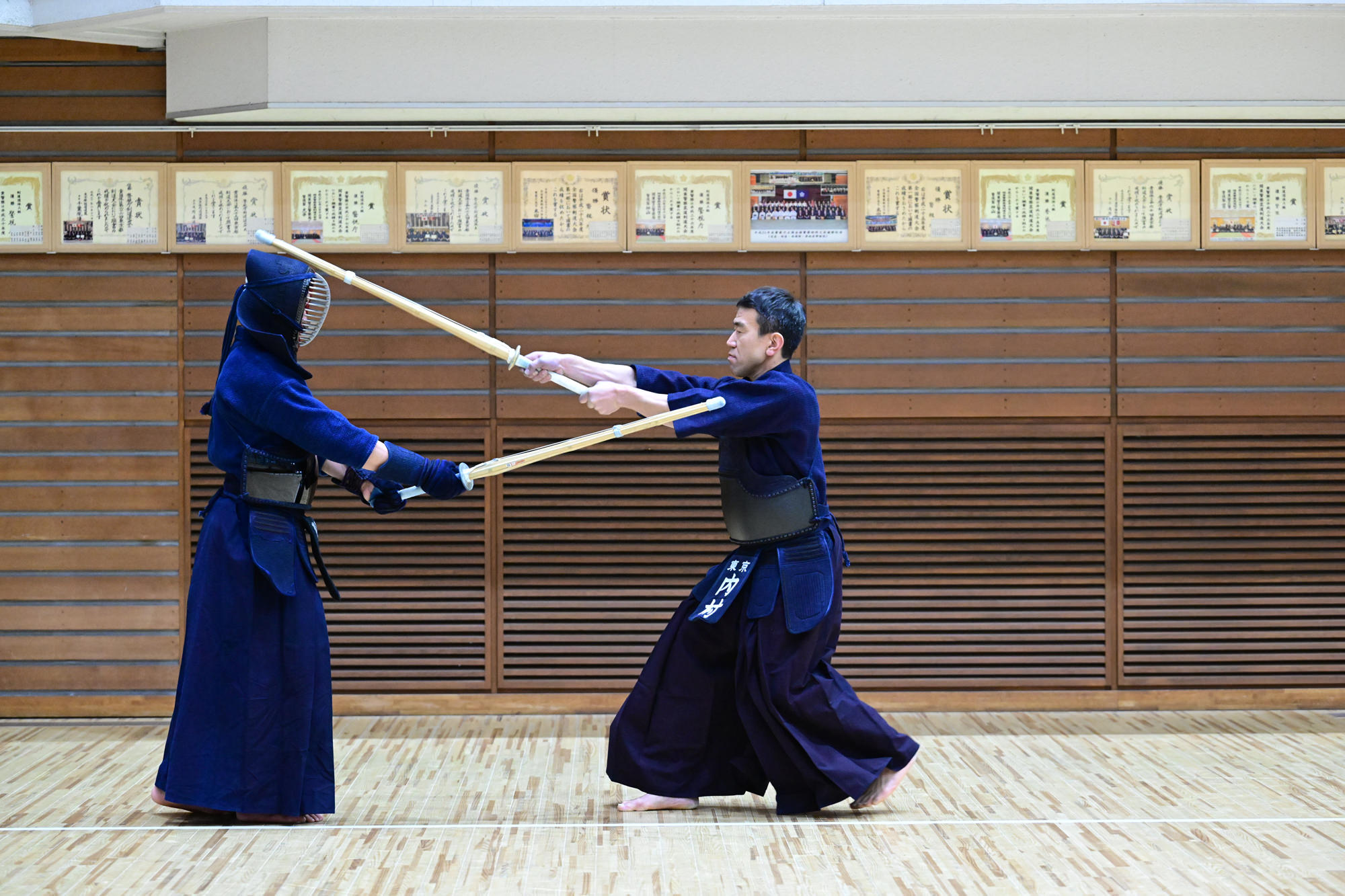
In a real match, strike Kote by pressuring the center and breaking down your opponent. Once you have entered Maai, do not move your feet.
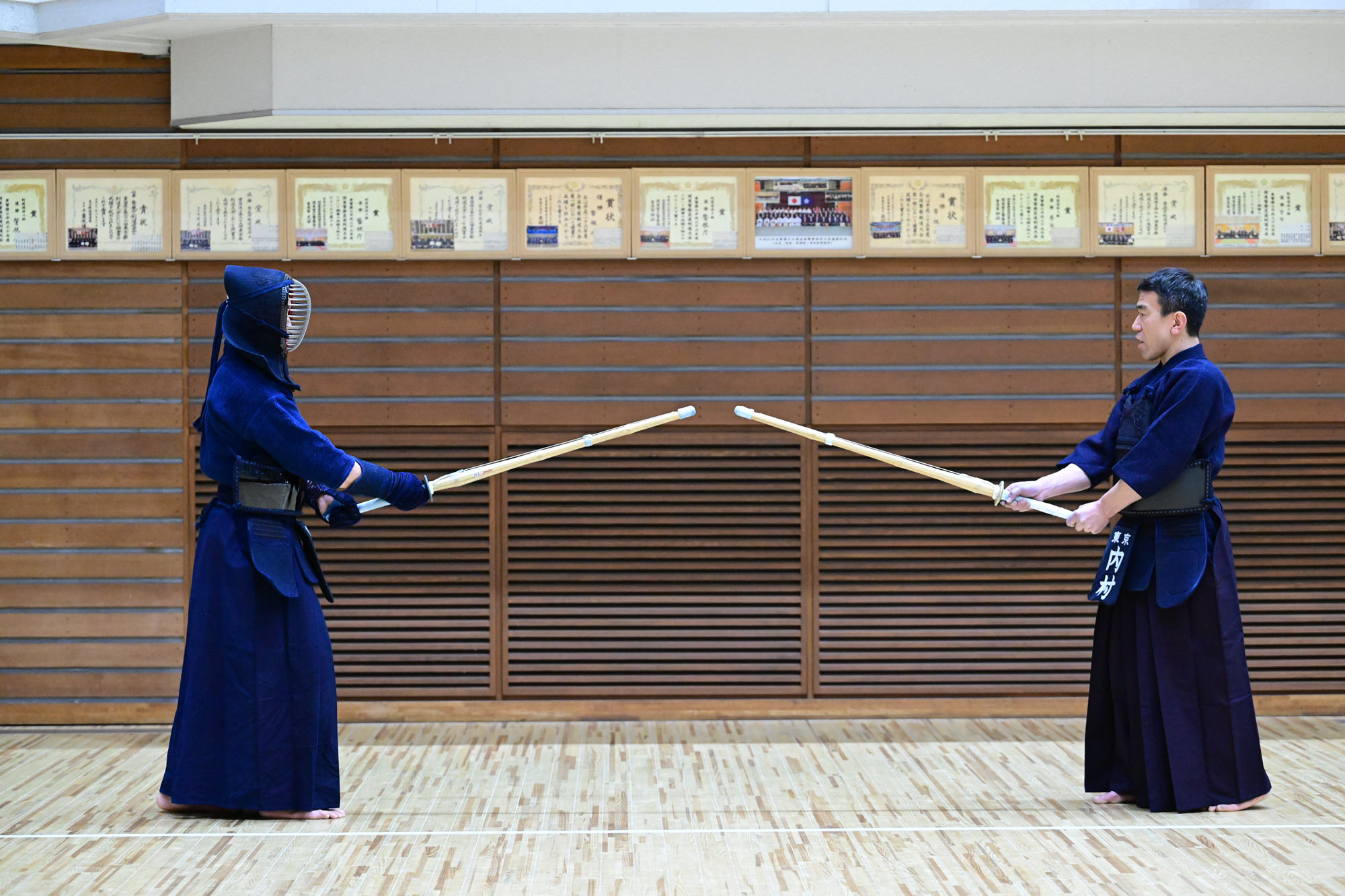

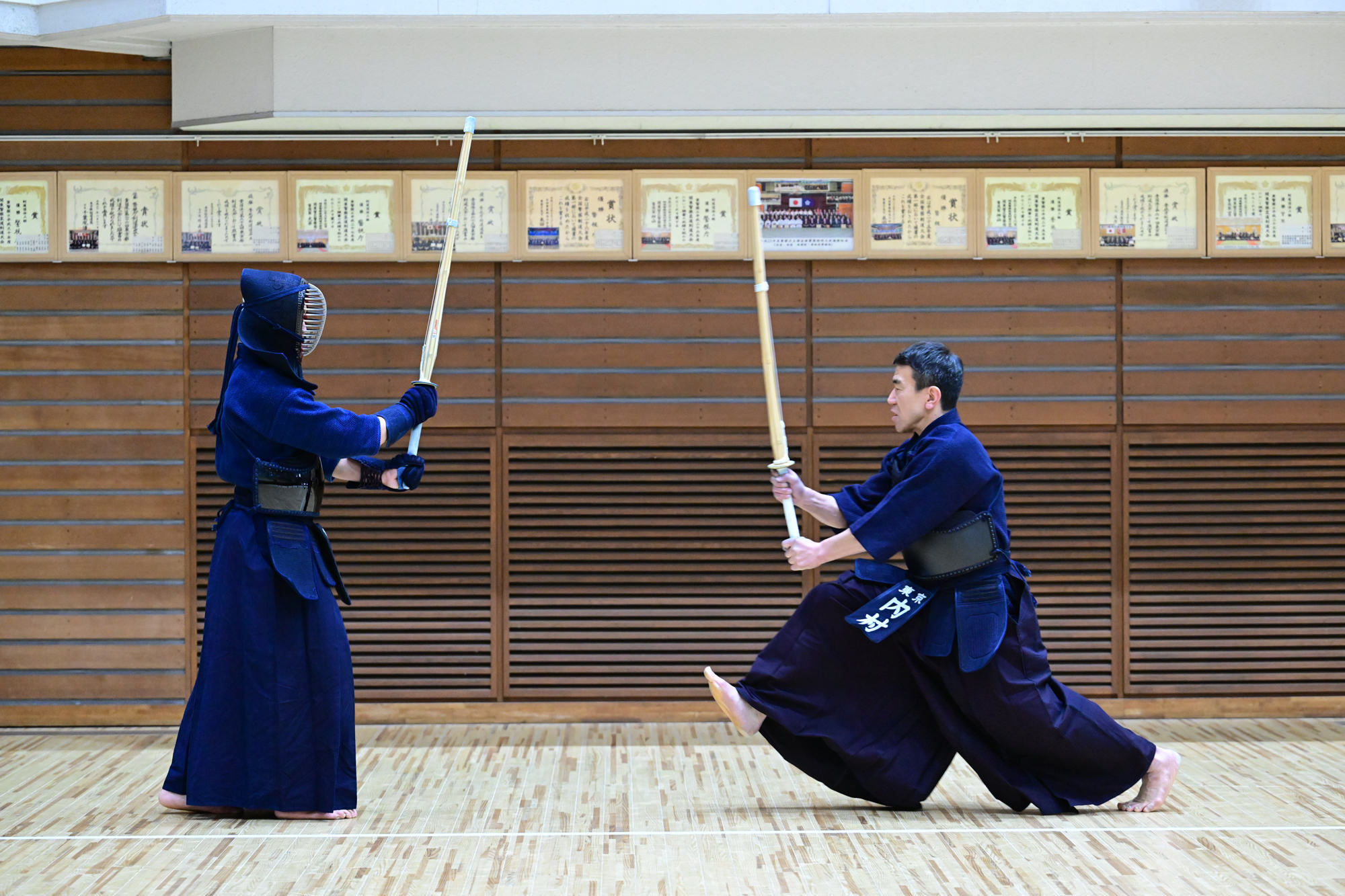

Combine Offense and Defense
Head of the Japanese national team, Hamasaki Mitsuru, general director Furukawa Kazuo, director of the men’s team, Higashi Yoshimi, and coach Teramoto Shoji, have been teaching us to combine offense and defense at the various Team Japan training sessions. They teach to always take the advantage, and that after blocking, you must launch your own technique. There is no defense in Kendo. This is what they are saying to the members of the national team, and I also emphasize this in my own training. My former teacher, Morishima Tateo, that “Kendo has offense, not defense.” As we get older, our bodies will stop moving well. This is precisely when it becomes important to win through Ki before striking. In Kendo, you can defend as much as you want. However, this is useless. It is important to acquire the power needed to score an Ippon. To borrow Higashi Sensei’s words again, “Rather than not allowing your opponent to score, you must score yourself. You must have the power to come back even when you are behind. To accomplish this, you must be able to always be on the offensive.” If you are on the defensive, you will never get a chance to score. For example, if me and my opponent are stepping back from Tsubazeriai, I will be the one to make the first move. It is important to create an opening by pulling in your left foot.
Suriage-men done with Okuriashi. It is important to take the initiative and move in first, and lure in the opponent. Perform Suriage while staying aware of the Shinogi.

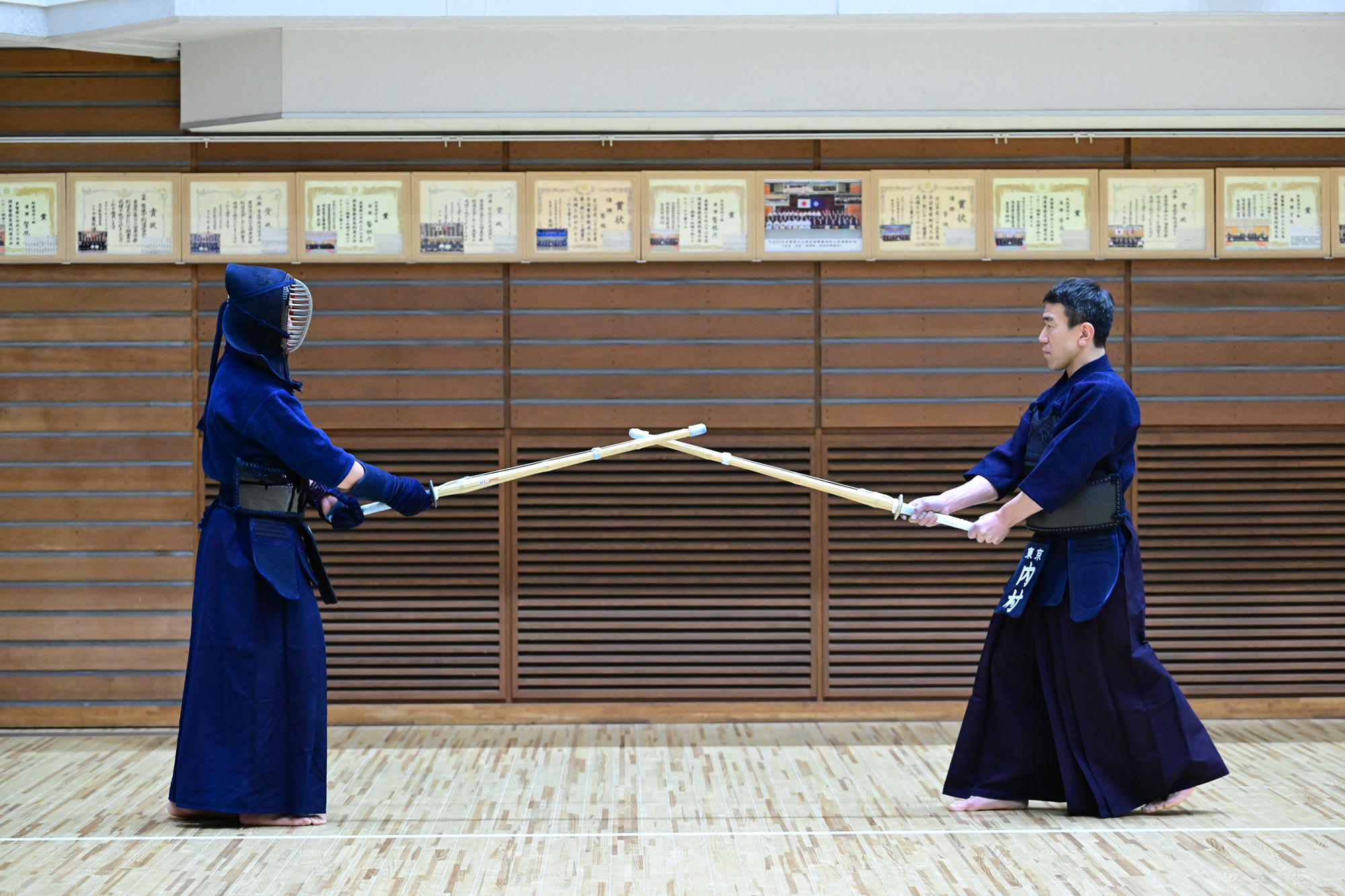
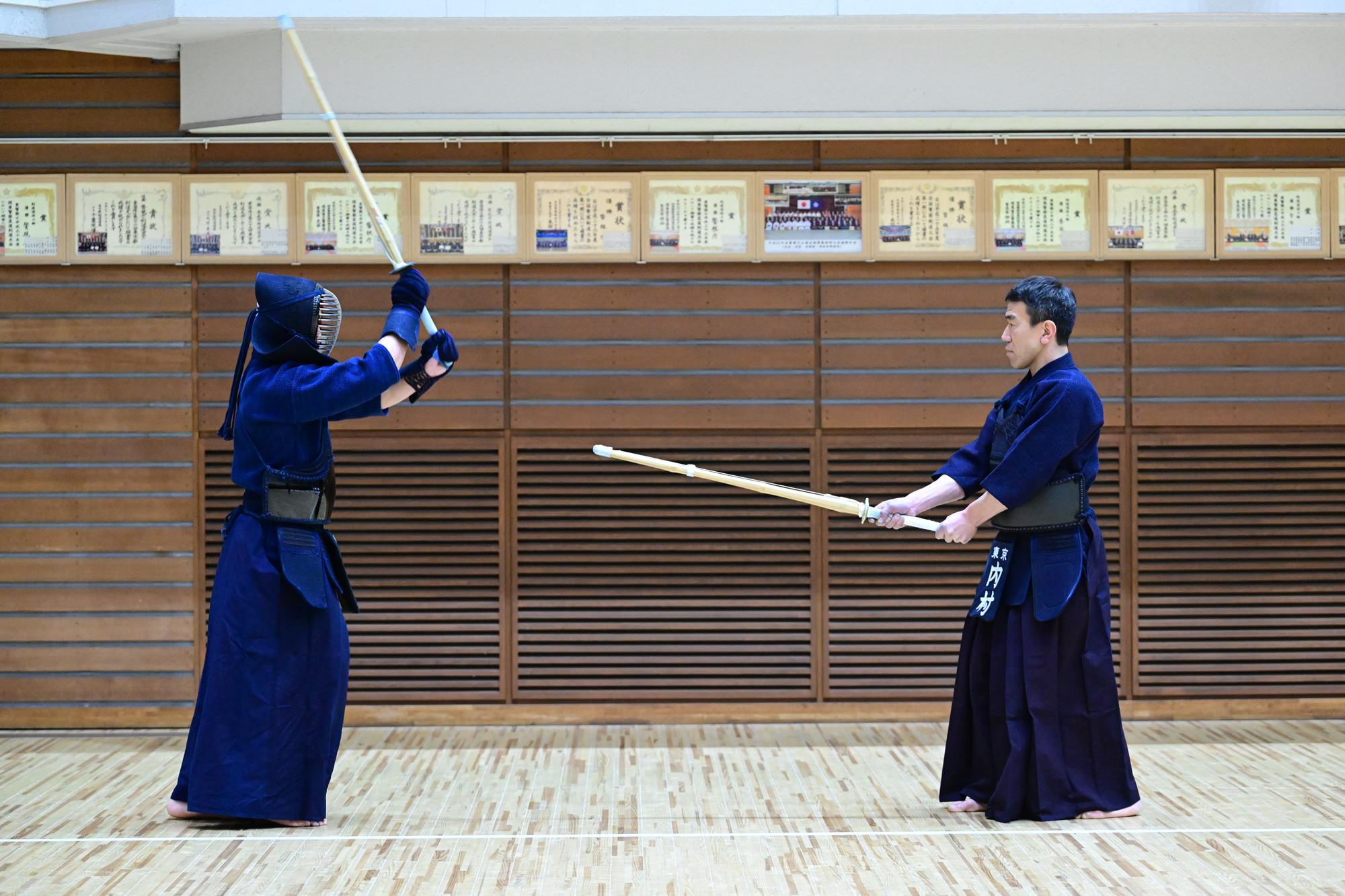
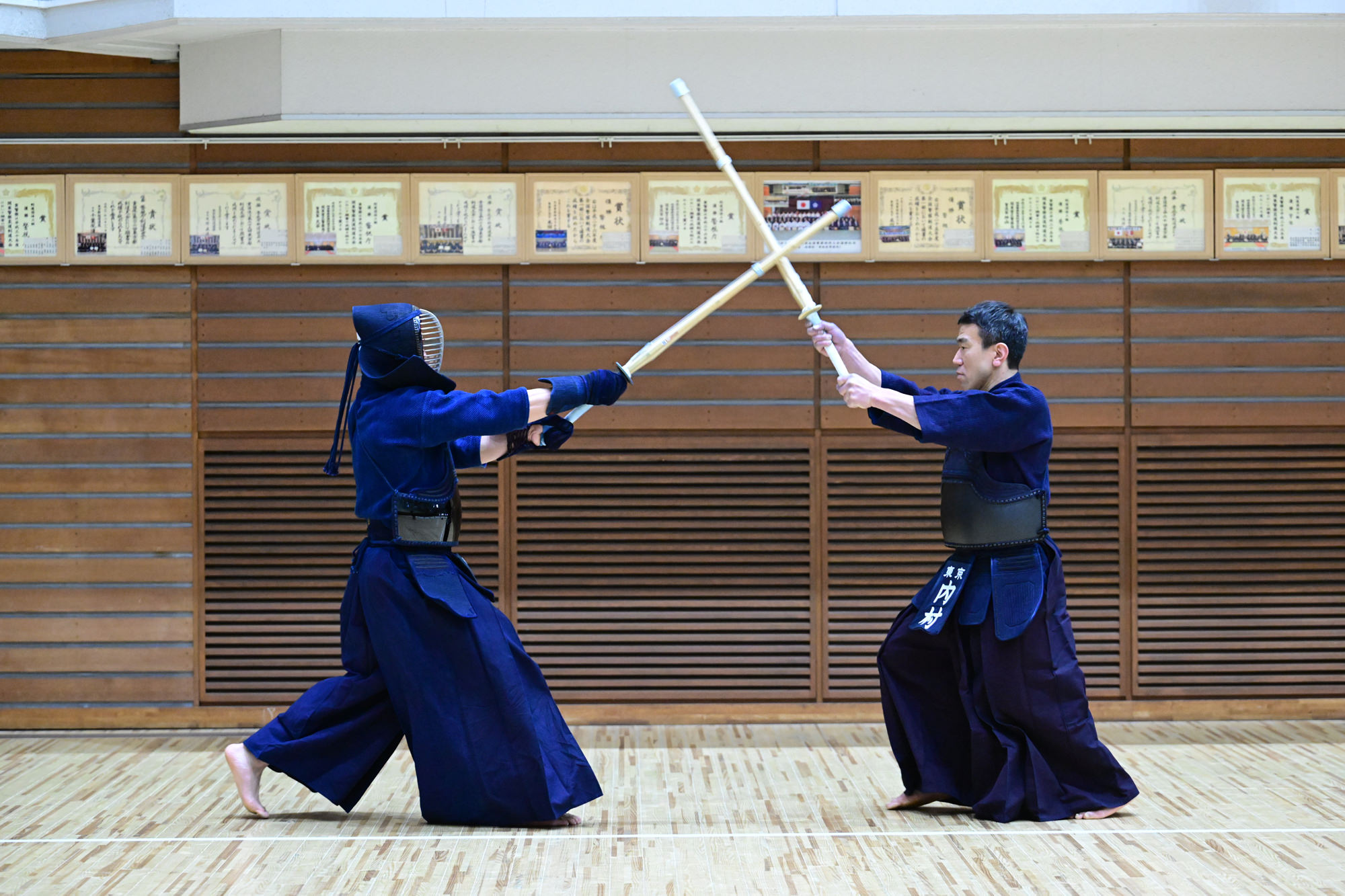
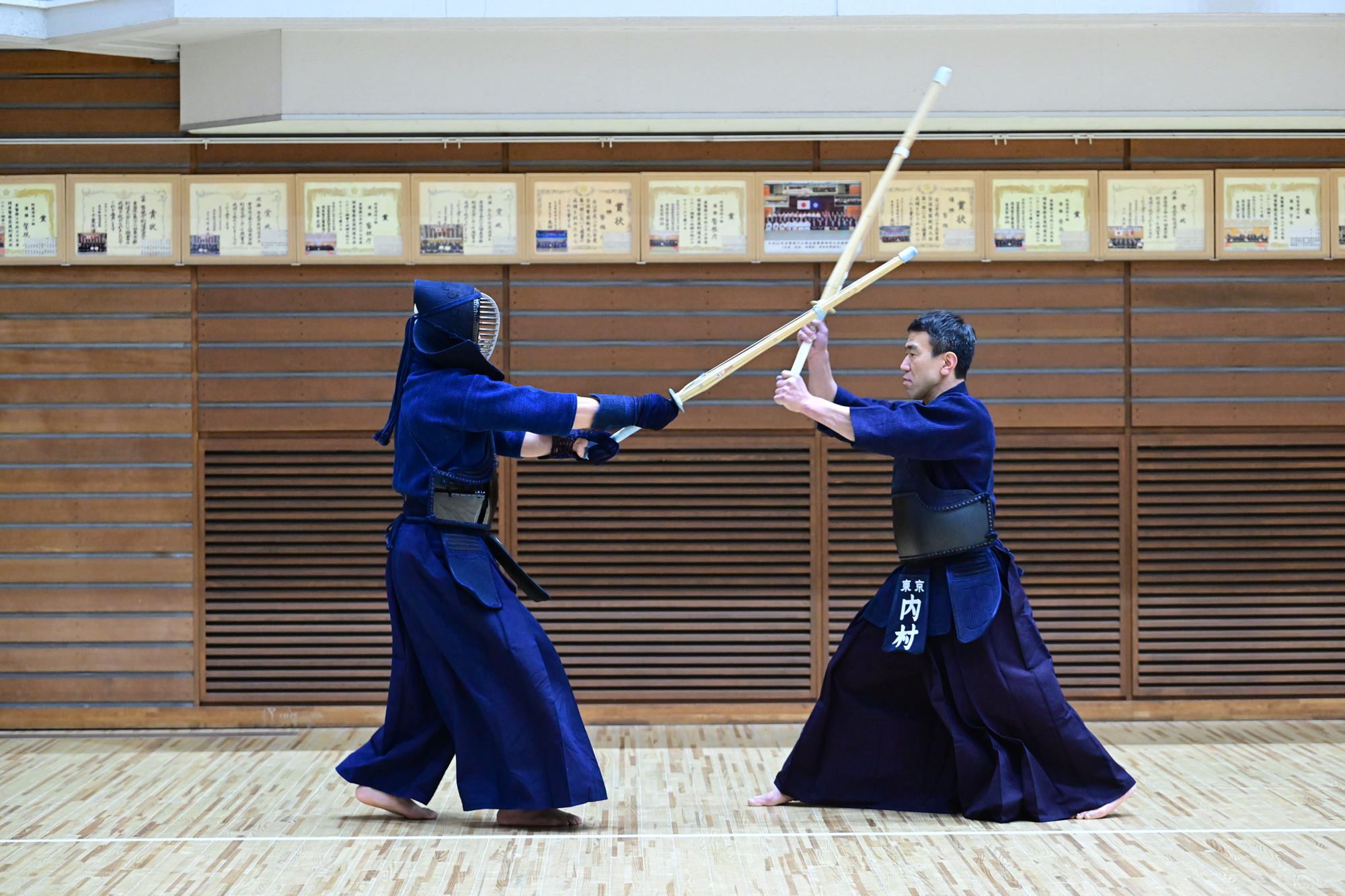
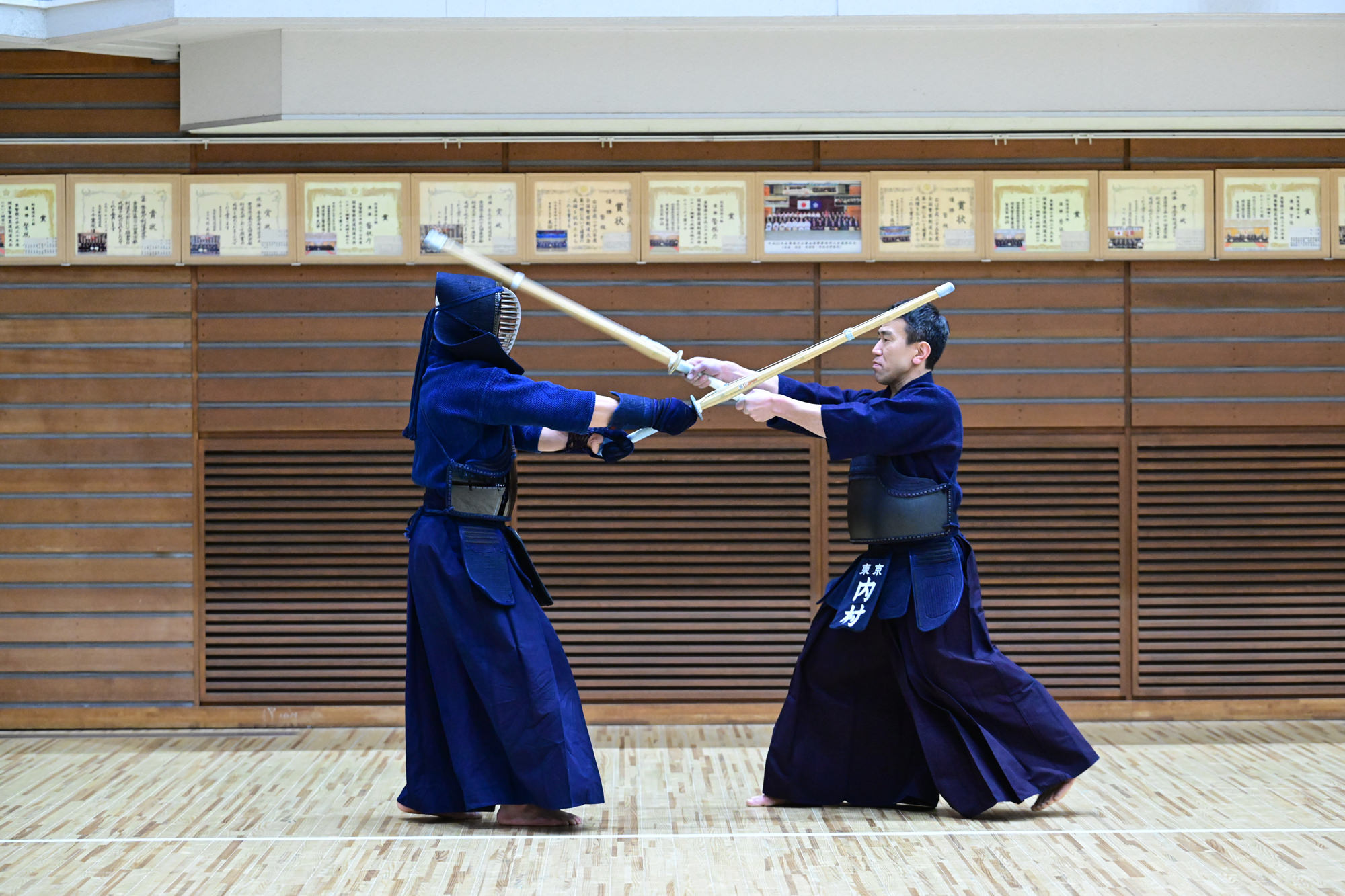
Men-kaeshi-men. By keeping the Kensen in the middle as much as possible and supporting it with the Shinogi on the Omote side, the opponent will become wary of Kaeshi-do. Strike Kaeshi-men at that moment.
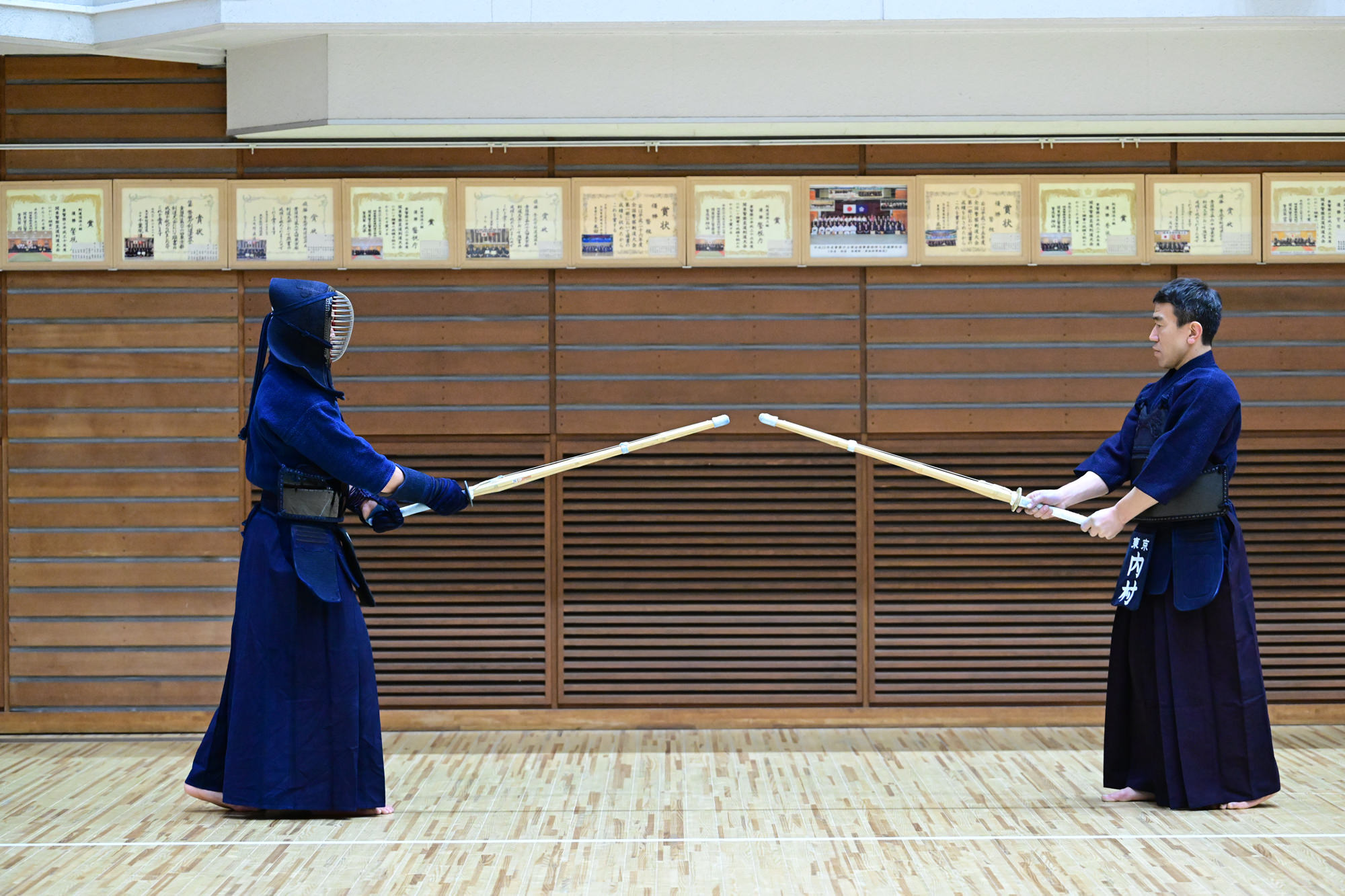
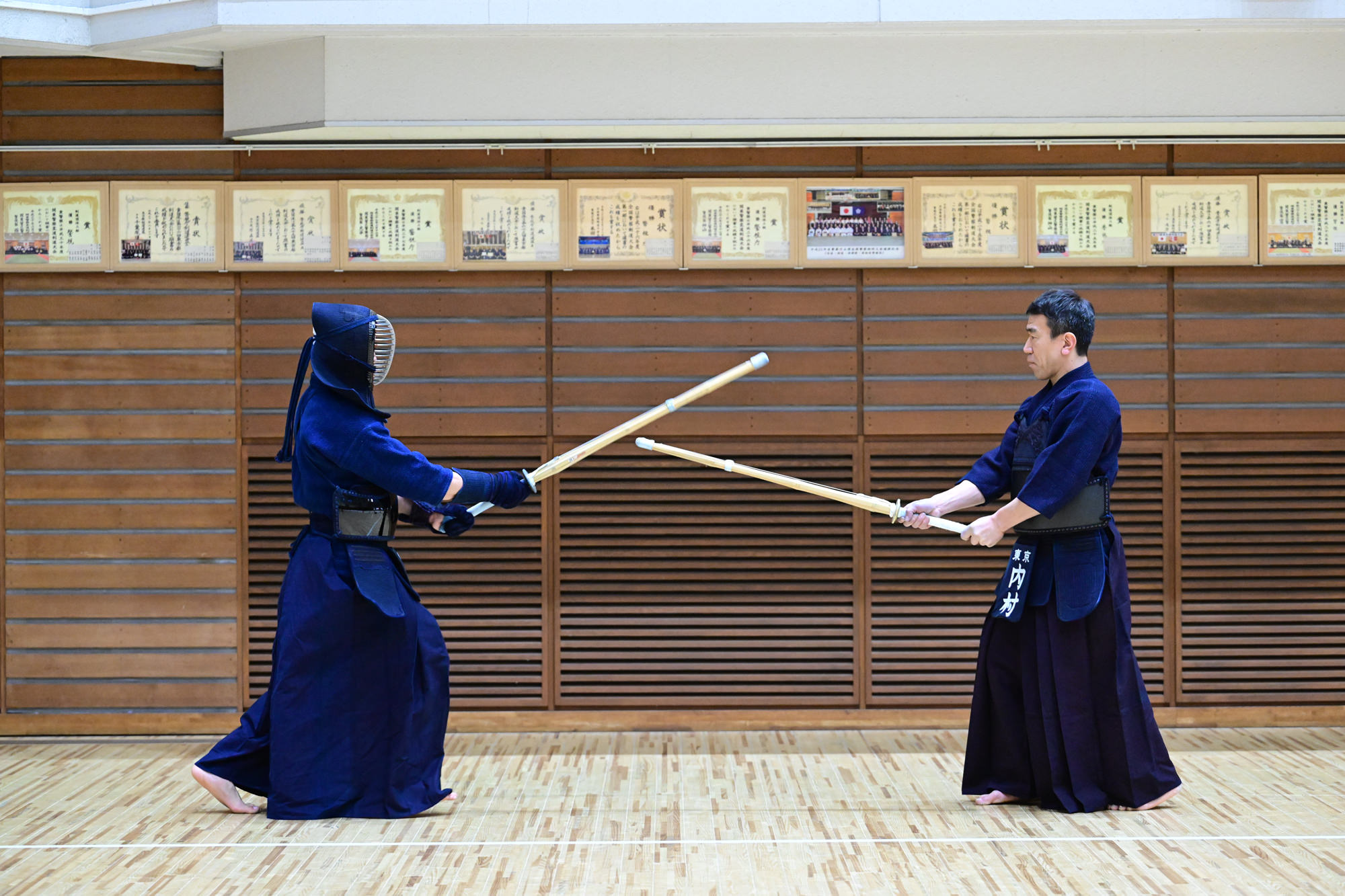

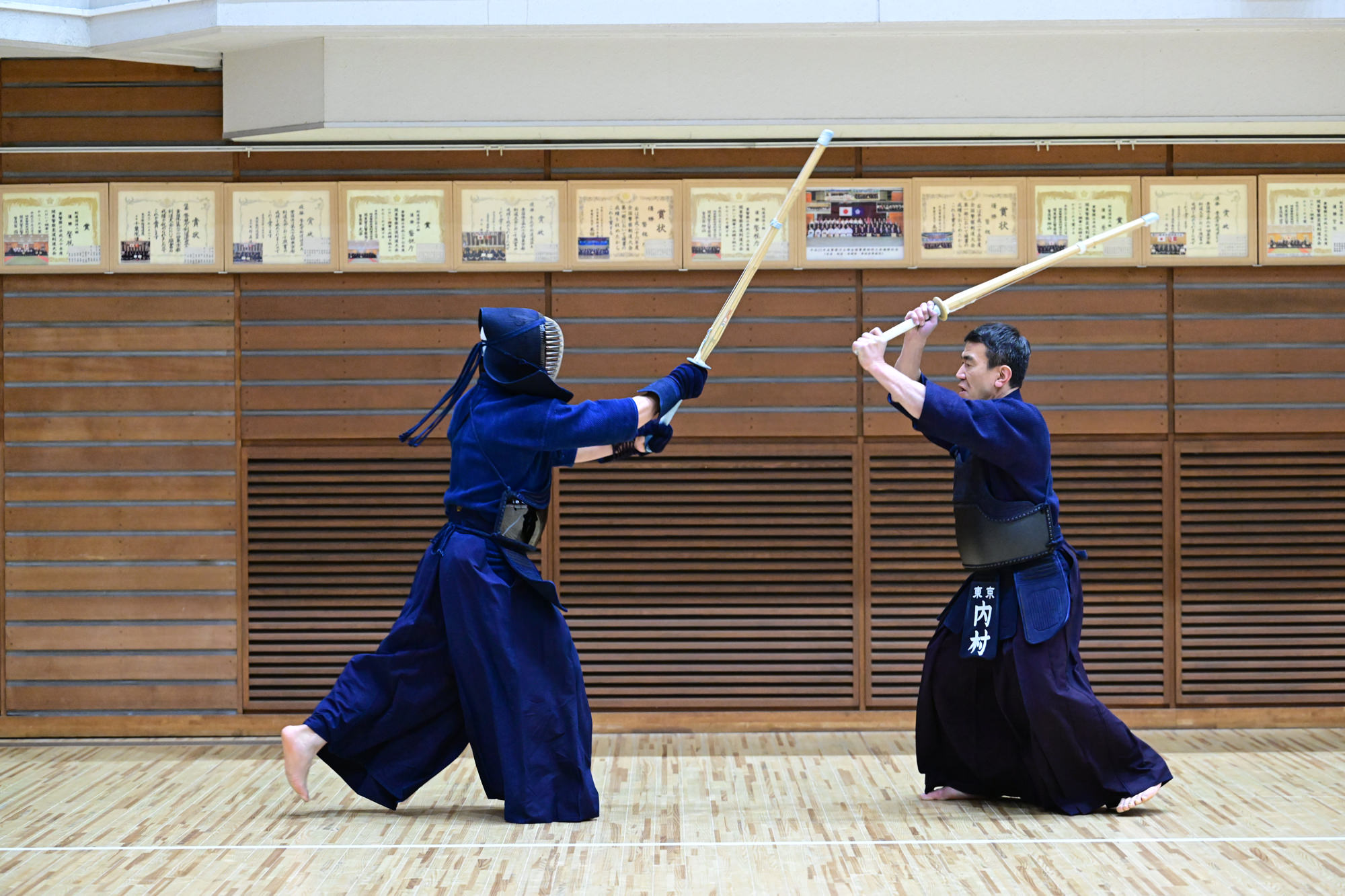
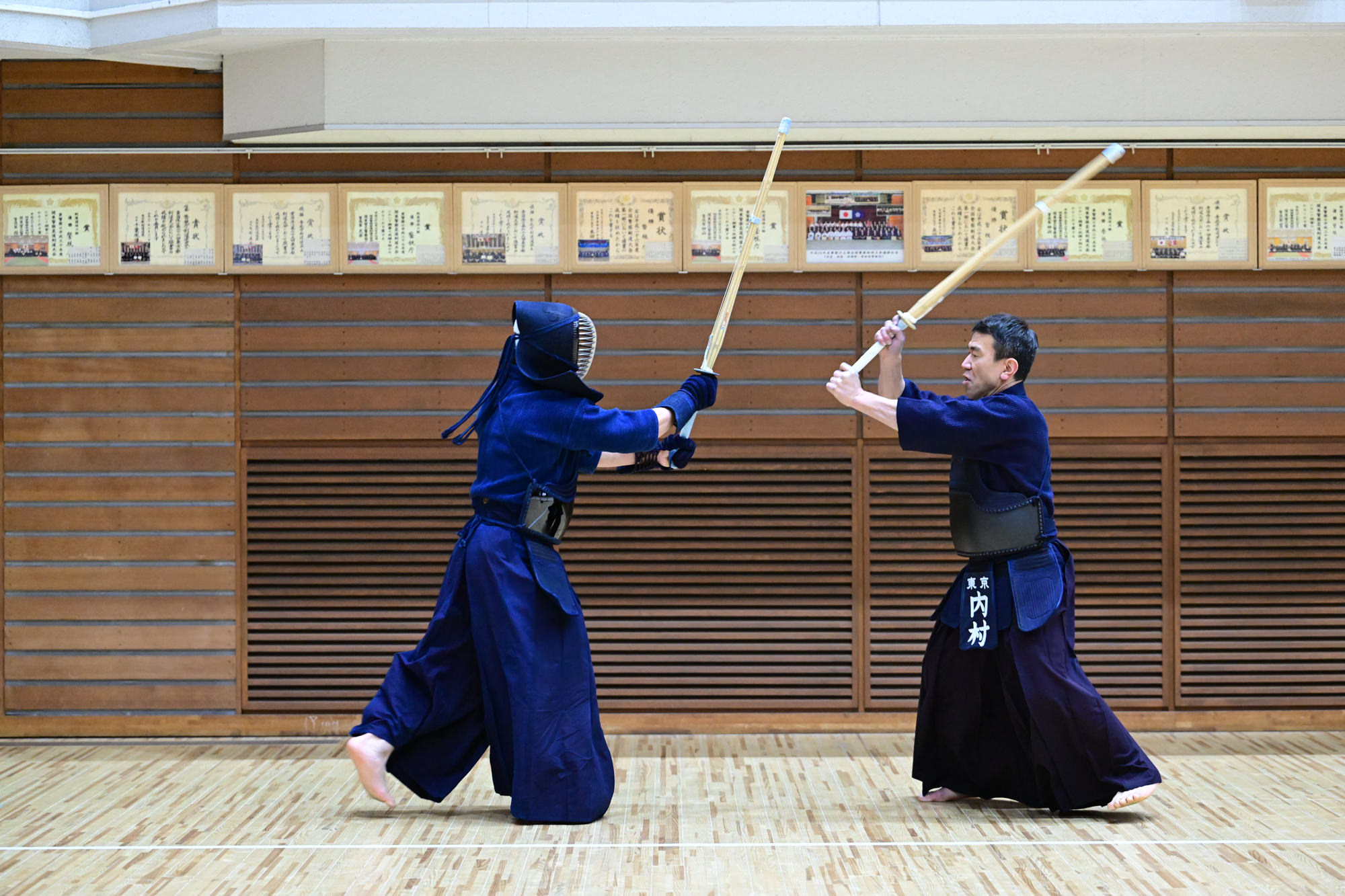
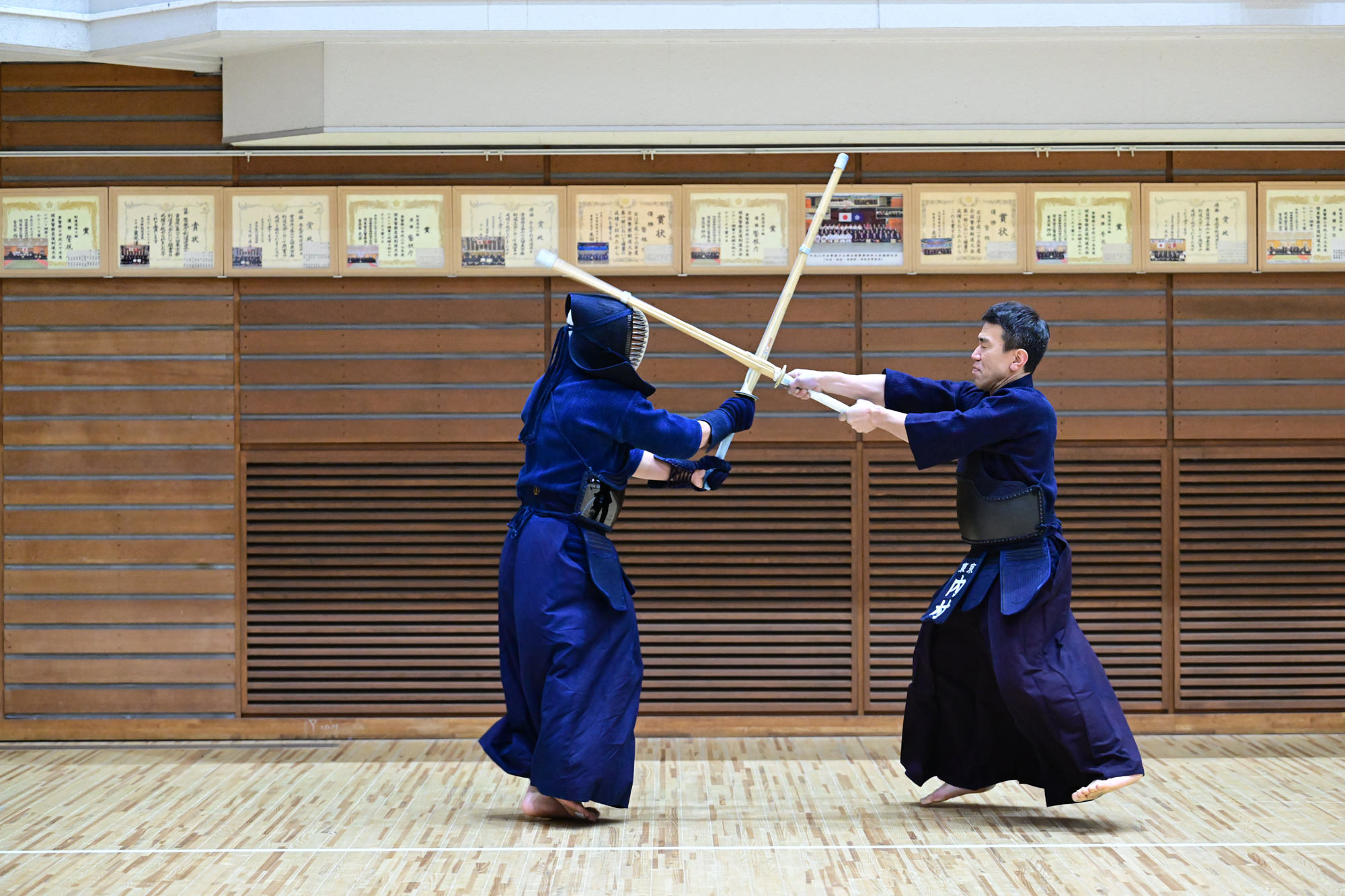
Self-awareness Promotes Improvement
I recently learned about “The Analects” by Confucius. Just before the 7th Dan Tournament, I heard the famous phrase, “If you hear about the Way in the morning, you might die that evening.” I interpreted it to mean, “If you learn the truth of your path in the morning, you may be content to die in the evening.” However, the teacher explained it to mean, “If you get the answer in the morning and learn the truth, then you are as good as dead.” He said, “Life is about learning through trial-and-error, failure, regret, and joy. Being taught these things from the start is the same as being dead.” Don’t give up, even if you fail. I hope to show the Tokuren members how to deal with adversity and never give up. These words affirmed all my insecurities, failures, and regrets. I felt that it was alright to be the person I am, and it allowed me to take on the challenge. I also learned a lot at the tournament. With this in mind, I will continue to devote myself to my quest.
